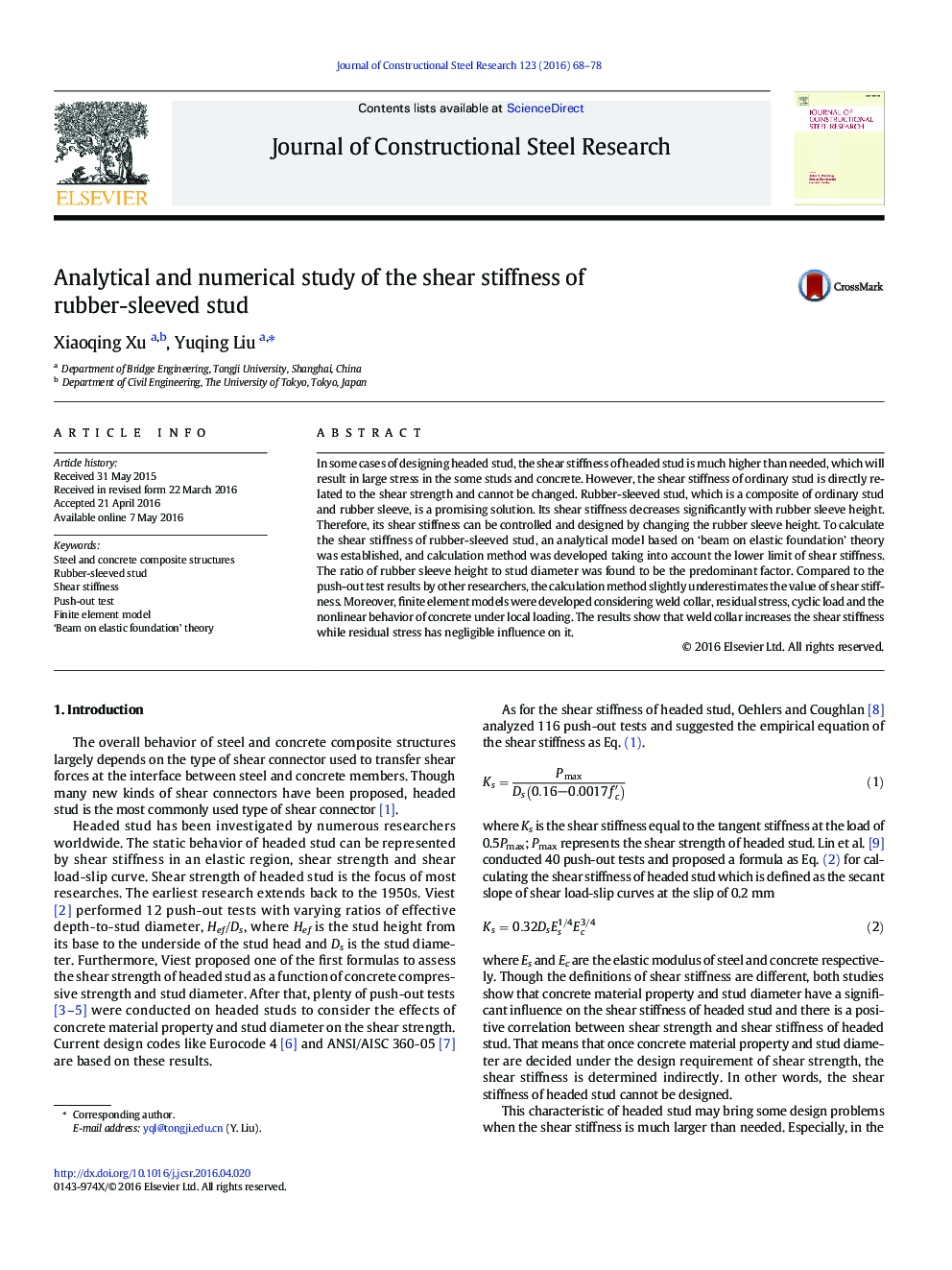| کد مقاله | کد نشریه | سال انتشار | مقاله انگلیسی | نسخه تمام متن |
|---|---|---|---|---|
| 284254 | 509134 | 2016 | 11 صفحه PDF | دانلود رایگان |
• Simple analytical models to predict the shear stiffness of rubber sleeved stud are proposed.
• Ratio of rubber sleeve height to stud diameter is the predominant factor on shear stiffness.
• Finite element models were developed considering weld collar, residual stress and cyclic load.
• Weld collar increases the shear stiffness while residual stress has negligible influence on it.
In some cases of designing headed stud, the shear stiffness of headed stud is much higher than needed, which will result in large stress in the some studs and concrete. However, the shear stiffness of ordinary stud is directly related to the shear strength and cannot be changed. Rubber-sleeved stud, which is a composite of ordinary stud and rubber sleeve, is a promising solution. Its shear stiffness decreases significantly with rubber sleeve height. Therefore, its shear stiffness can be controlled and designed by changing the rubber sleeve height. To calculate the shear stiffness of rubber-sleeved stud, an analytical model based on ‘beam on elastic foundation’ theory was established, and calculation method was developed taking into account the lower limit of shear stiffness. The ratio of rubber sleeve height to stud diameter was found to be the predominant factor. Compared to the push-out test results by other researchers, the calculation method slightly underestimates the value of shear stiffness. Moreover, finite element models were developed considering weld collar, residual stress, cyclic load and the nonlinear behavior of concrete under local loading. The results show that weld collar increases the shear stiffness while residual stress has negligible influence on it.
Journal: Journal of Constructional Steel Research - Volume 123, August 2016, Pages 68–78
